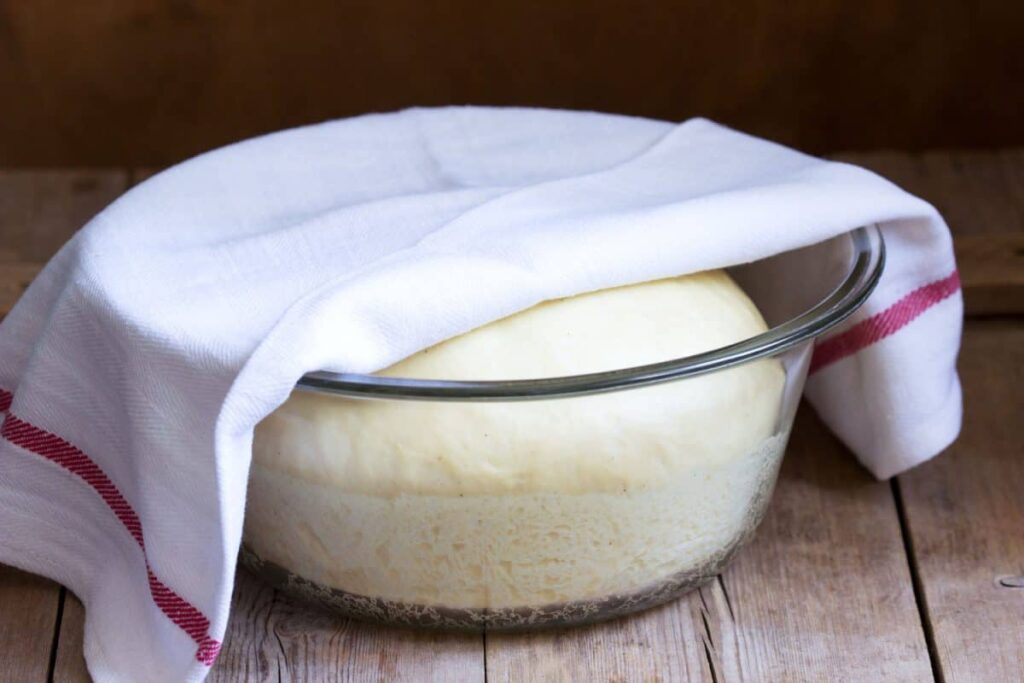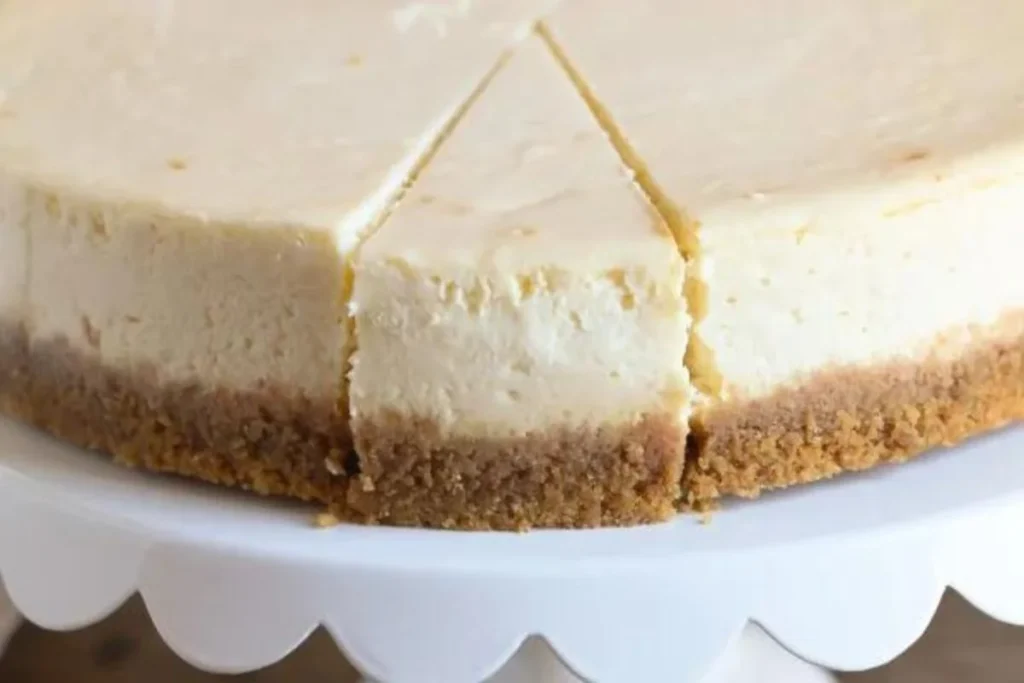
The Science Behind Covering Dough: 5 Reasons You Should Never Skip This Step
Do you ever find yourself getting impatient when it comes to making dough? Maybe you’re tempted to skip the step of covering it and just jump right into the next phase of your recipe. Well, hold on tight, because I’m about to reveal the science behind covering dough and why it’s a step you should never skip.
From improving texture to enhancing flavor, there are five key reasons why covering your dough is essential for baking success. Whether you’re making bread, pizza dough, or pastry, understanding the importance of this simple yet crucial step will take your baking skills to the next level.
Table of Contents
ToggleThe Importance of Covering Dough
Covering dough is a step that is often overlooked or rushed through in the baking process. However, it plays a vital role in ensuring the success of your baked goods. When you cover your dough, you create a controlled environment that promotes proper fermentation and development of flavor.
This is especially crucial for yeast-based doughs, as the covering helps to trap moisture and warmth, allowing the yeast to thrive and produce carbon dioxide. The carbon dioxide is what gives bread its light and airy texture, making it rise beautifully in the oven.
What Happens When You Skip Covering Dough?
If you skip the step of covering your dough, you risk exposing it to air, which can lead to the formation of a dry crust on the surface. This dry crust prevents the dough from properly rising and can result in dense and heavy baked goods.
Additionally, without proper covering, the dough can dry out, leading to a loss of moisture and a less desirable texture. Skipping the covering step also means that the dough is more susceptible to temperature fluctuations, which can affect fermentation and result in inconsistent results.
The Science Behind Covering Dough
To truly understand the importance of covering dough, let’s delve into the science behind it. When dough is covered, it creates a warm and humid environment that is ideal for the yeast to grow and multiply. Yeast is a living organism, and it thrives in a slightly warm and moist environment.
By covering the dough, you create the perfect conditions for the yeast to produce carbon dioxide, which is what causes the dough to rise. The covering also prevents the dough from drying out, allowing it to retain moisture and develop a soft and tender texture.
Benefits of Covering Dough
There are several key benefits to covering your dough during the fermentation process.
- Firstly, covering the dough helps to trap moisture, preventing it from evaporating and keeping the dough hydrated. This hydration is essential for gluten development, resulting in a chewy and elastic texture.
- Secondly, covering the dough creates a warm environment, which speeds up fermentation and allows the yeast to work its magic. This leads to better flavor development and a more pronounced taste in the final baked goods.
- Thirdly, covering the dough protects it from drafts and temperature fluctuations, which can negatively impact fermentation and result in inconsistent rise and texture.

Why Do You Cover Dough with a Damp Cloth?
Covering your dough with a damp cloth is a common practice in baking, especially when working with bread, pizza, or pastry dough. But why do bakers opt for a damp cloth instead of other coverings like plastic wrap or nothing at all?
Let’s explore the reasons behind this choice and the benefits it brings to your dough.
1. Moisture Retention: One of the primary reasons for using a damp cloth to cover dough is moisture retention. Unlike airtight coverings like plastic wrap, a damp cloth allows for some airflow while preventing the dough from drying out. The moisture from the damp cloth helps keep the dough’s surface hydrated, resulting in a softer and more supple texture.
2. Crust Prevention: The damp cloth creates a barrier that prevents the formation of a dry crust on the dough’s surface. A dry crust can inhibit proper rising and lead to a tougher texture in your baked goods. By maintaining a slightly humid environment around the dough, you ensure that it stays pliable and capable of achieving that coveted rise.
3. Natural and Eco-Friendly: Using a damp cloth is a sustainable and eco-friendly choice. It reduces the need for single-use plastic wrap and is a more environmentally conscious option. Plus, it’s easily reusable, making it a practical choice for home bakers.
4. Gentle Protection: A damp cloth provides gentle protection to your dough. It doesn’t press down on the dough or create a completely airtight seal, which can sometimes inhibit yeast activity. Instead, it offers a delicate cover that safeguards the dough without hindering its natural expansion during fermentation.
5. Traditional Approach: Using a damp cloth to cover dough is a tradition passed down through generations of bakers. It’s a tried-and-true method that has stood the test of time and remains a preferred choice for many experienced bakers.
6. Easy Monitoring: With a damp cloth, you can easily monitor your dough’s progress. You can peek underneath the cloth to check on its rise and development without having to remove the covering entirely. This convenience allows you to make adjustments if necessary, ensuring a successful outcome.

The Purpose of Covering Dough: 5 Reasons You Should Never Skip This Step
Covering dough serves multiple purposes that contribute to the success of your baked goods. The primary objectives of covering dough include maintaining moisture levels, preventing a dry crust, protecting the dough from contaminants, promoting proper fermentation, and enhancing flavor and texture.
Let’s explore these reasons in more detail.
Reason 1: Maintaining Moisture Levels
When dough is left uncovered, it is exposed to the air, which can lead to moisture loss. By covering the dough, you create a barrier that traps moisture within the dough, preventing it from drying out. This retained moisture is crucial for maintaining the dough’s hydration level, resulting in a softer and more tender final product.
Reason 2: Preventing a Dry Crust
In addition to maintaining moisture levels within the dough, covering it also prevents the formation of a dry crust on the dough’s surface. When a dough crust forms, it can hinder the dough’s ability to rise properly and result in a tougher texture. By covering the dough, you create a controlled environment that prevents excessive drying and promotes optimal rising.
Reason 3: Protecting the Dough from Contaminants
During the resting process, the dough is vulnerable to external contaminants such as dust, dirt, or even insects. Covering the dough acts as a protective shield, preventing any unwanted particles from coming into contact with the dough. This ensures a cleaner and safer dough that is free from potential sources of contamination.
Reason 4: Promoting Proper Fermentation
Yeast plays a vital role in fermentation, where it consumes sugars in the dough and produces carbon dioxide gas. This process creates air pockets that give baked goods their characteristic light and airy texture. By covering the dough, you create a more stable and controlled environment for the yeast to thrive, resulting in a more consistent and even fermentation process.
Reason 5: Enhancing Flavor and Texture
Covering the dough during the resting period allows the flavors to develop and intensify. This is especially true for yeast-based dough, as the fermentation process contributes to the development of complex flavors. Additionally, by maintaining optimal moisture levels and preventing a dry crust, you ensure a softer and more enjoyable texture in the final baked product.
How to Properly Cover Dough
Now that we understand the importance of covering dough, let’s discuss how to do it properly. The most common method is to use a clean kitchen towel or plastic wrap to cover the bowl containing the dough. Ensure that the cover is tightly secured to prevent any air from getting in.
You can also lightly oil the surface of the dough to prevent it from drying out. Another option is to use a dough proofer, which is a specialized appliance that provides a controlled environment for dough fermentation.
Regardless of the method you choose, make sure to follow the recipe instructions for covering the dough and adjust accordingly based on the specific needs of your recipe.
Common Mistakes to Avoid When Covering Dough
While covering dough may seem like a straightforward step, there are a few common mistakes that can impact the results.
- Firstly, avoid using a cover that is too tight, as this can restrict the dough’s ability to expand and rise properly.
- Secondly, be mindful of the temperature of the covering. If it is too cold, it can slow down fermentation, while if it is too warm, it can speed it up too much, resulting in overproofed dough.
- Finally, do not disturb the dough unnecessarily during the covering process, as this can interfere with fermentation and lead to uneven rise.
Tips for Covering Dough in Different Baking Scenarios
Covering dough may vary depending on the type of recipe you are working with. Here are a few tips for covering dough in different baking scenarios:
1. Bread Dough: When making bread dough, it is essential to cover it during the bulk fermentation phase. Use a clean kitchen towel or plastic wrap to cover the bowl and place it in a warm spot to promote proper rise.
2. Pizza Dough: Pizza dough benefits from a longer fermentation period, which develops flavor and improves texture. Cover the dough with plastic wrap and let it rise in the refrigerator overnight. This slow rise will result in a more flavorful and chewy crust.
3.Pastry Dough: Pastry dough, such as for croissants or puff pastry, requires careful handling and covering. It is important to cover the dough tightly to prevent it from drying out and forming a crust. Use plastic wrap or a dough proofer for optimal results.

Should I Cover Dough While Proofing?
Many bakers often wonder whether they should put a lid on their dough while it’s proofing. Proofing, which is the last rising stage for your dough, is really important for getting the texture and flavor you want in your baked treats.
Whether you should cover your dough or leave it uncovered during this step depends on a few things, and knowing your options will help you make a smart decision.
Factors to Consider:
- Recipe Instructions: Start by checking the specific recipe you’re using. Many recipes will provide guidance on whether to cover the dough during proofing. Always follow the instructions provided, as they are tailored to the particular type of dough you’re working with.
- Dough Type: The type of dough you’re proofing can influence whether you should cover it or not. For yeast-based dough, covering is often recommended. It creates a controlled environment with higher humidity, which is beneficial for yeast activity and achieving a good rise. On the other hand, some non-yeast doughs, like puff pastry, might not require covering during proofing.
- Ambient Conditions: Consider the ambient conditions in your kitchen. If your kitchen is drafty or very dry, covering the dough can help maintain the necessary moisture levels for proper proofing. In contrast, if your kitchen is warm and humid, you may choose not to cover the dough or use a breathable covering to prevent excessive moisture buildup.
Pros of Covering Dough During Proofing:
- Moisture Retention: Covering dough during proofing helps to trap moisture, preventing the dough’s surface from drying out. This retained moisture contributes to a softer and more tender final product.
- Protection: Covering offers protection against external contaminants such as dust, dirt, or unwanted particles that can settle on the dough during the proofing process.
- Controlled Environment: It creates a controlled and stable environment for the dough, allowing for consistent fermentation and rise.
Cons of Covering Dough During Proofing:
- Over-Proofing Risk: If you use an airtight covering or proofing container, there’s a slight risk of over-proofing, especially if the dough is left to proof for an extended period. Over-proofing can lead to a loss of structure and texture in your baked goods.
- Sticky Surface: Depending on the covering used, the dough’s surface may become slightly sticky due to condensation. This can affect the ease of handling the dough.
Alternative Coverings:
If you choose to cover your dough during proofing, you have various options:
- Plastic Wrap: Plastic wrap is a common choice for covering dough. It creates an airtight seal, trapping moisture and providing good protection.
- Clean Kitchen Towel: A clean, damp kitchen towel allows for some airflow while retaining moisture. It’s a traditional and eco-friendly choice.
- Dough Proofer: If you’re an avid baker, investing in a dough proofer, a specialized appliance, can provide precise control over temperature and humidity during proofing.
Frequently Asked Questions About Covering Dough
Can I use any type of covering for my dough?
Yes, you can use various coverings for your dough, such as plastic wrap, a damp cloth, or even a fitted lid for the container. The important factor is creating a barrier that seals in moisture and protects the dough.
How long should I cover the dough?
The duration for covering the dough can vary depending on the recipe and ambient conditions. As a general guideline, cover the dough for the recommended resting or proofing time stated in your recipe.
Should I cover the dough with plastic wrap or a damp cloth?
Both plastic wrap and a damp cloth can effectively cover the dough. Plastic wrap provides an airtight seal, while a damp cloth allows for some airflow. Choose the method that best suits your preference and the specific requirements of your recipe.
Does covering the dough affect the rising process?
No, covering the dough does not hinder the rising process. In fact, it helps create the ideal environment for yeast fermentation, promoting optimal rising and achieving the desired texture in your baked goods.
Conclusion
Covering dough is a step that should never be skipped when it comes to baking. From improving texture to enhancing flavor, the science behind covering dough is clear. By creating a warm and humid environment, you provide the ideal conditions for yeast to thrive and produce carbon dioxide, resulting in light and airy baked goods.
So, the next time you’re tempted to rush through this step, remember the incredible results that come from giving your dough the attention it deserves. Elevate your baking game by embracing the importance of covering dough and unlock a world of delicious possibilities. Happy baking!
Lindsey Mackenzie
About me
Hi there! I’m Lindsey Mackenzie, the founder of Bake Smartly. Baking has been my passion since childhood, growing up in my father’s bakery. With Bake Smartly, I’m excited to share my love for all things sweet and savory. Join me on this delicious journey as we whip up scrumptious treats and sprinkle joy into every bite!






